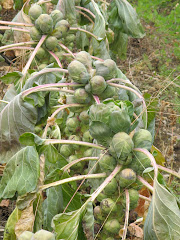Butter and yogurt are both extremely easy to make. The most important thing is to get good, fresh, and, if possible, raw milk. When milk is pasteurized, all of the beneficial, healthy bacteria, along with any potential pathogens, are killed. In yogurt and cheesemaking, this is especially important to realize, because most of the bacteria and cultures present in the milk that gives yogurt its natural flavor are destroyed. If you try to make yogurt at home with pasteurized or ultra-pasteurized milk, you will not have much success. Cheese is also affected by pasteurization - the wide range of texture, flavor, and consistency in cheese is partially due to the natural bacteria in the milk.
Raw milk is healthy and delicious, a whole, living food with many health benefits that are simply destroyed through pasteurization, which renders milk a dead food. Healthy, grass-fed cows, raised on pasture and milked in clean environments provide safe, healthy milk. Buying raw milk is a great way to support small dairies that often don't have the means to compete with the bigger farms, but that are practicing organic, sustainable grazing and raising healthy cows.
Check out the NOFA Massachusetts webpage on raw milk, along with a list of dairies in the state that sell it: http://www.nofamass.org/programs/organicdairy/rawmilk.php
For the enthusiastic home-dairy-maker, here are two easy recipes that don't take more than an hour (not including cooling time).
Homemade Butter

Method 1:
Take some fresh cream (preferably unpasteurized cream skimmed off the top of a gallon of milk, but good quality lightly pasteurized cream should also work), put it in a mason jar, and shake vigorously for 10-20 minutes, until the fat globules mass together into a yellow glob. This is a great workout!
Pour off the buttermilk (delicious in pancakes!), and begin to wash your butter. Put it on a plate, pour some cold water over it, and work it with your hands. Pour off the water, add more, and continue washing it until the water you pour off is completely clear. Add salt if desired, and eat with fresh bread. Yum!
Method 2:
Same as above, except use a food processor to agitate the butter.
Fresh Yogurt

Heat a half gallon of milk in a double boiler over medium heat until it reaches either 120 or 180 degrees F. (If you heat it to 120, you won't kill all the bacteria, so your yogurt will still be a living product, but it will be harder to get a good, thick consistency without adding some kind of thickener. If you want a thick yogurt, heat to 180.)
Take the milk off the heat and let it cool to 115 degrees F. This will take a while. Once cooled, mix in 5 Tbs. of pre-made yogurt and stir well. Once you have a batch of yogurt made, you can use it as your culture each time you want to make more. Pour the yogurt into a half gallon mason jar, wrap it in a blanket or towel, and let sit in a warm place for 6-8 hours. If you have a gas oven, put your yogurt on the bottom rack with the oven off but the pilot light off. A cooler also works well.
After 6 hours, take out your yogurt, and eat it with jam and maple syrup. Yum!





































































No comments:
Post a Comment